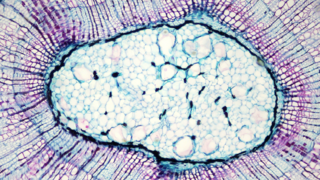A team of scientists at the Scripps Research Institute in California has revealed that a chemical process called "phosphorylation" may have contributed to the early stages of the formation of protocells on Earth.
Phosphorylation is defined in biochemistry as the process of adding a phosphate group to a protein molecule, or introducing a phosphate group to an organic molecule in general. It results in important functions that can transform spherical groups of fat called protocells into more advanced and sophisticated versions, more diverse, stable and chemically active.
Scientists have long believed that these protocells served as fundamental building blocks of biochemistry more than 3.5 billion years ago, perhaps emerging from hot springs under the ocean along the way to the evolution of more complex biological structures.
The research team hypothesized that, given the prevalence of “phosphorylation” in the body’s biological functions, it must have contributed to the early stages of the formation of protocells.
The team simulated conditions and processes in the laboratory that might match those that occurred in the early days of Earth, fusing together chemicals, such as fatty acids and glycerol, to create more complex vesicles (bubble-like structures that facilitate protocells that facilitate cellular processes).
Scientists achieved the required chemical reactions by making some change in temperature and acidity, which shows that "phosphorylation" may have contributed to the development of protocells in primitive sediments.
“This discovery helps us better understand Earth’s early chemical environments so we can discover the origins of life and how it evolved,” says chemist Ramanarayanan Krishnamurthy, of the Scripps Research Institute.
“The vesicles were able to move from a fatty acid environment to a phospholipid environment during our experiments, indicating that a similar chemical environment could have existed four billion years ago,” adds chemist Sunil Politikurti.
However, many similar studies need to be conducted to ascertain how life appeared on Earth.
“Our findings suggest that there is a wealth of interesting physics as well, which may have played key functional roles all the way to modern cells,” says biophysicist Ashok Deniz, of the Scripps Research Institute.
The research was published in Chem magazine .
Tags:
earth cell
earth life
first cell formed
organic molecule
phosphate group
phosphorylation
protein molecule
protocells
science

